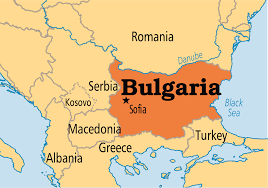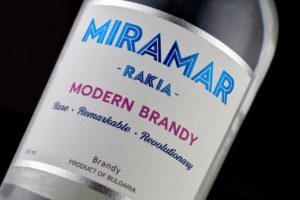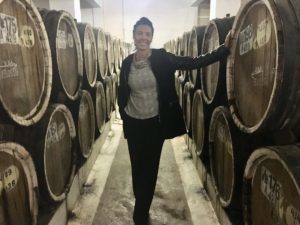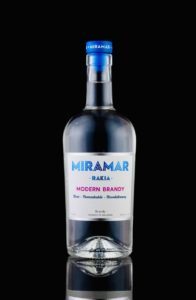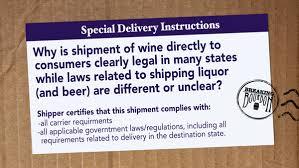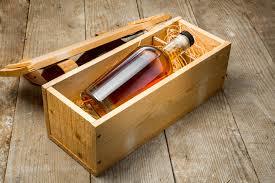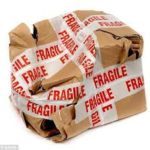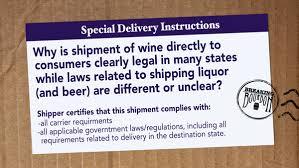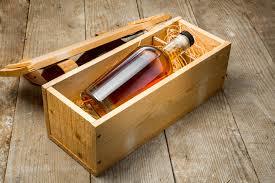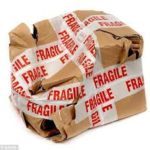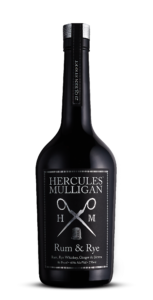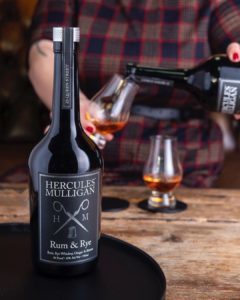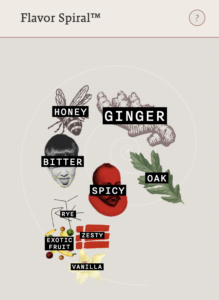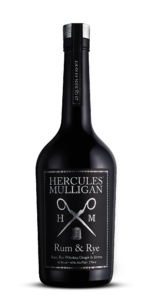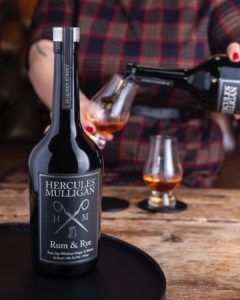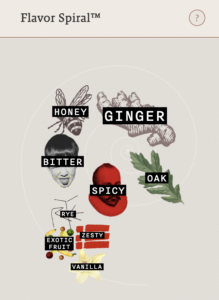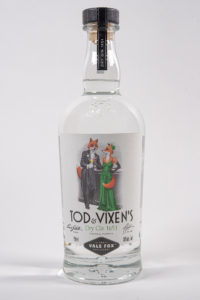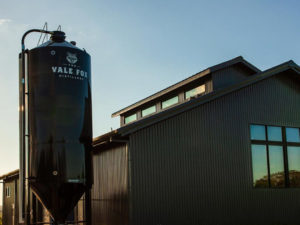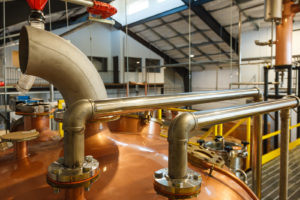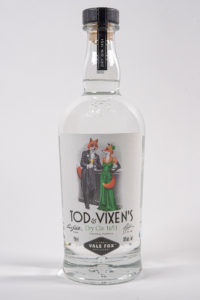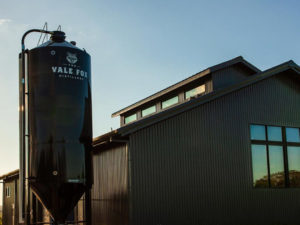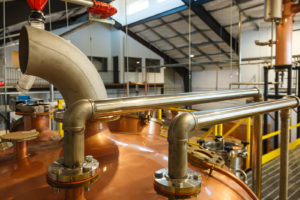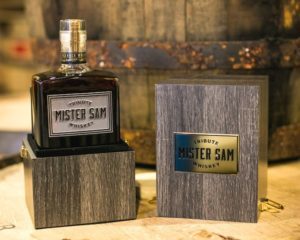Arthur Shapiro's Blog, page 2
August 13, 2020
Miramar Rakia From Bulgaria: The American Dream
The phrase and concept of The American Dream comes from James Truslow Adams in his book, the Epic of America. This definition will set the stage for the story you are about to read:
The American Dream is the belief that anyone, regardless of where they were born or what class they were born into, can attain their own version of success in a society where upward mobility is possible for everyone. The American Dream is achieved through sacrifice, risk-taking, and hard work, rather than by chance. (Source)
Selena Nitz, founder and owner of Miramar Rakia Modern Brandy, emigrated from Bulgaria in 1999 with the intention of living the American Dream. Through hard work and perseverance, she is on her way toward accomplishing her goal via a unique and interesting product from her home country.
Let’s start with her story…
Selena grew up in Communist Bulgaria on a farm in the countryside. Among other crops, her father and grandfather had a vineyard and made wine and Rakia (more about this in a moment). While the farm life was pleasant, surrounded by friends and family, once the Communist regime was over, she yearned to come to America with her daughter. Not an easy feat, considering the difficulty in getting a visa, the cost and the fear of rejection. Once rejected by the American embassy, it could take a decade or more to get one, if ever.
Despite the obstacles, Selena, a single mom, set her mind on a new life for her and her child in America. She sold everything she had, hired someone to coach her on what to do and how to act during the interview process. All she had left was the money for an airplane ticket, plus $200. More than that, she had a dream and the tenacity to make it come true.
It took her from 1991 to 1999 to make it happen.
I asked her how her family felt about her leaving. She told me she had to buy a round trip plane ticket in order to get her visa. Her father told her she will use the return ticket because she will give up, “you have no idea of where you’re going.” She ripped up the ticket and said to herself, “there’s no way back, that’s it.” Did I say tenacious? Add feisty to the list.
Coming to America
She landed in New York, Brooklyn to be precise, and what followed was a series of odd jobs in restaurants and English lessons from her daughter who learned the language quickly.
After two years in NYC, they moved to Chicago where Selena worked in various restaurants and studied to become a hairdresser and cosmetologist. But an important moment came while working bars and restaurants in downtown Chicago. She decided to become a citizen and began thinking about the booze business.
Her American citizenship ceremony resonated with me and should also to anyone whose family emigrated to the USA. Selena describes it as inspiring and memorable, with the Judge telling those who took part that they came into his court from 44 countries and will leave through the same door as one, as Americans. She went on to tell me what else he said:
“We welcome you to America but at the same time, we don’t want you to change. Actually the opposite, we want you to stay who you are and take something from all of your cultures… that you have in your heart or your traditions, cuisine or any habits, and share with us so you can enrich our culture even more.”
As her new life in Chicago began to take shape, Selena often thought about the bottle of Rakia she brought with her at the urging of her father. He had said “take this with you to America… it will remind you of home… and share it with your American friends.”
Suddenly, the thought struck her about the spirits industry based on articles and news reports about the business, brands, their development and sales. She thought, there are all types of spirits out there but no Rakia. Why is there no Rakia?
So, Selena went back to Bulgaria, drove from border to border, visited over 30 distilleries and finally found the best Rakia makers in the country.
What is Rakia?
This is from her website:
Rakia is the collective term for fruit brandy very popular in Central and Southeast Europe. Because it’s made from fruits, it’s categorized as “brandy”, but it’s nothing like brandy… It can be made with many fruits but grape and plum are the most popular.
The countries making their own variation of Rakia include, Albania, Serbia, Croatia, Turkey, Macedonia, Romania, and Moldova. Each has its own adaptation and uses a wide range of fruits. In Bulgaria, grapes, plums, and apricots are most frequently used as a raw material.
The Bulgarians claim that they were the first to create Rakia, based on pieces of pottery from the 14th century, and they have taken measures to declare it a national drink. “A psychotherapist can help you but Rakia is cheaper” — is a contemporary proverb many Bulgarians swear by.
Selena’s Rakia – Miramar Modern Brandy
Back to her journey. The makers she found are located on the coast of the Black Sea, have their own vineyard and have been making Rakia for nearly a century. But, she had a vison of what the product should taste and be like and painstakingly described the start, the finish, and the type of smoothness she wanted.
From the back label: “The Miramar Experience… a 23-step continuous distillation process [that] honors the Rakia tradition, yet modernizes it to create an extraordinarily smooth long finish.”
Miramar Rakia is created with rare, handpicked Muscat Ottonel grapes from a single estate. They recently won a double gold medal from the SF World Spirits Competition, thereby creating a Rakia category.
Ah, therein lies a tale. Our friends at the TTB were reluctant to approve the brand because, as far as they were concerned, there is no such category as Rakia. It took four months and much back and forth. So, instead of creating a category, they approved the brand — Miramar Rakia Modern Brandy. I imagine the back and forth as going something like this:
TTB: There’s no such thing as Rakia. We never heard of this category.
Selena: But the EU recognizes it as a category and has for many years.
TTB: No, no, we don’t have this in America.
Selena: Well, this doesn’t mean it doesn’t exist, right? Okay, if you don’t want to accept this as a category I’m going to make it as a part of my brand name.
TTB: There’s no such thing as modern brandy.
{More time, more emails and many more phone calls follow. Finally, …}
TTB: Okay, fine. You can have it. Have modern brandy, okay? Whatever it is, just leave us alone.
Those folks from the TTB are such jokesters.
By the way, you’ll find it in the brandy/cognac section.
Off to market
From a route to market standpoint, Selena has made some very smart moves.
She has an exclusive distribution arrangement with Southern Glazer’s Wine and Spirits, not an easy accomplishment. They test marketed the brand in south Florida and it did well. The idea of a clear brandy, in a category no one ever heard of was just the right combination of “unique” and “willing to try.” It is very mixable and you might want to check out the recipes on the website.
As is the case for nearly all startup/emerging brands, the Covid virus interfered, so she cleverly pivoted and began selling Miramar direct-to-consumers using Passion Spirits (where I bought a bottle). They are now shipping to 28 states from Florida. They are also talking about going into Illinois with an eye toward Binny’s 40+ locations.
Along the way, she persuaded a former Seagram colleague, Phil Gervasi, to join her. As Selena puts it, “Phil is my secret weapon… he’s been my mentor and been with me every step of the way.”
Phil held many senior sales positions at Seagram, worked at Diageo where he was senior vice president/general manager for California and several western states. His most recent position was EVP, North America Sales for Patron. In fact, it was a former colleague from Patron that introduced her to Phil.
She couldn’t have picked a better person to work with. Or a smarter, nicer guy.
* * *
Selena Nitz is indeed living the American Dream. At a period in the history of this country where some question and even oppose immigration, I’m proud to know her and share her story. Her journey reminds us that what made America truly great was the willingness to open our doors and provide opportunities to those willing to work hard to accomplish the dream.
As to Miramar Rakia Modern Brandy, I’ll close with this comment from one of the judges at the SF competition:
“It’s very unique because it’s a little floral on the nose and I’m ready for it to be sweet. But when I drink it, it’s almost like fine tequila. This is very hard to achieve.”
The brand sells for $39.99 (750 ML), 40 AbV (80° proof) has no additives, is gluten and sulfate free, non-GMO, and nothing artificial.
June 29, 2020
Direct-to-Consumer Spirit Sales: Why so Hard?
Online purchasing of almost everything has been growing for years, including wine. But, spirits have only just begun to enter the direct shipment world with lots of obstacles and constraints. How come?
My partner Rob Warren and I have spent the past year and a half researching and learning about the emerging business of direct sales of spirits to consumers.
(We are partners in a brand building and route to market consultancy called Wisdom & Booze, LLC. He’s the wisdom, which is why I asked his help in writing this article.)
In a nutshell, we learned: 1) the need for Direct to Consumer (DtC) spirits sales is important to both makers and drinkers alike 2) online solutions for spirits will grow (we felt that way even before the coronavirus) 3) there is a patchwork quilt of players and solutions and 4) frankly, the quilt often contains confusion and, at times, land mines.
Our journey began with a quest to enter the business, to either create an enterprise or partner with someone already in it.
Then it struck us… few of the players in the business understand the spirits world, and what it takes to develop and build a brand. They understand the world of e-commerce and the digital gold mine it can provide, but know little about the world of the producer, or consumer, for that matter. With some notable exceptions, DtC providers are strictly transaction focused.
The world of direct, it occurred to us, means control of the presentation and sale of your brand; a closeness to the buyer/consumer previously obscured from view by the layers between the maker and the drinker — also known as the 3-tier system. As an example, Rob and I worked on Crown Royal back in the day, and direct marketing to consumers meant that the brand developed a relationship (some would even say a bond) with its drinkers. Using direct marketing efforts, we made the brand come alive and turned drinkers into fans and influencers.
So, we gave up chasing the players to join them and became “agnostic,” a business entity focused on the maker/producer and a guide to what we see as the important, but not always effective, quagmire known as the current state of DtC.
To sell booze online you need wisdom.
Let’s back up for a moment…
Online purchasing of almost everything has been growing rapidly for years, even prior to the coronavirus. Direct buying of alcohol, in the form of wine, has become a $3+ billion a year business. Over 40 states allow for direct interstate shipments. At the same time, direct delivery of cannabis is already happening in medical and recreational use states.
Ah, but for spirits, it’s catch as catch can — intrastate is generally okay but some in the business will tell you they ship to most places, others say a few, and even one told us: “I ship everywhere. I mark it “Olive Oil” (wink, wink).
Let’s see if we got this straight. Selling cannabis is classified by the Federal government as a Class A felony. But 11 states and DC allow for recreational use and another 31 either allow cannabis for medicinal purposes or have decriminalized its use. In addition, wine can be shipped all over the country — intra and interstate. But I can’t send a bottle of liquor made in New York to Colorado.
Didn’t we decide a long time ago that alcohol is alcohol? Check with the National Institute of Health, a drink is a drink —12 oz of beer = 9 oz of malt = 5 oz wine = 1.5 oz of spirit.
Part of the problem is the misconception that liquor is hard and other forms of alcohol are… what, not hard? Soft?
The growth of DtC for spirits
This emerging method of distribution began way before the virus reared its ugly head. The changing spirits and trade environments were at the core of the impetus. Consider this:
The wine people, particularly small wineries, led the charge with direct shipments from their wineries, sales to consumers who visited, and eventually 3rd party wine shippers (including the NY Times and WSJ) entered the fray.
Industry consolidation and resulting financial pressures at all tiers created limitations on brand choice and selection. Examples: Which would you rather sell as a distributor sales rep, 6 bottles of a small unknown brand or 6 cases of a winner. A typical retailer question — “which leading brand should I remove from my shelf to make room for your crap?”
Even at the mainstream producer level, small, fledging brands get the hind teat, while the successful ones live high off the hog, so to speak. (Never mind that Tito’s and Bulleit were once startups).
And then there is the consumer him/herself, whereby the new drinking world of cocktails and quality over quantity, has led to a “discovery” mode of the new, unique and desirable.
The term “desirable” has many driving factors — the story behind it; the limited availability; unique and not many others are like it; shows knowledge and good taste; outstanding product; and so on.
Convenience at one end, hard to find and desirable at the other end — all add up to an important 4th tier, the consumer.
The current DtC landscape
For the most part, there are three main segments:
1) Convenience — local purchases and local delivery.
2) Marketplace — brand aggregators selling a range of brands
3) White label — a “storefront” embedded on a brand’s website.
All of them follow the 3 tier system requirements.
The convenience segment is what is currently driving the DtC efforts. Companies like Drizly, using local retailers, are at the heart of the market. Basically, a delivery service (fast, reliable, and good at what they do), the focus is on mainstream brands that consumers know and are popular.
But, for small brands that consumers want but are hard to find — craft and top shelf alike — Drizly may not be the answer. According to Drizly:
“One of the most important things to remember is that Drizly brings retailers’ shelves online. That means it is important to have a renewed or refreshed focus on their [small brands] distributor relationships in order to work with those partners to ensure that they’re showing up on the actual shelves, and therefore on Drizly’s virtual shelves.”
A Drizly presence means the same route to market as usual but on an ecommerce platform. The key is product availability and distribution.
Fortunately, the presence of LibDib, a web-based distribution platform, can significantly help resolve the distribution problem. Their footprint is growing (currently NY, CA, CO, IL, FL, WI) and their link with Republic National Distributing Company (RNDC) means their distribution role will further be enhanced.
In effect, LibDib provides a virtual national distribution platform for all segments of the direct to consumer approaches. (See other articles I have written about them here, and here.)
The marketplace (an online store) can range from actual stores (e.g., Country Wine and Spirits, Total Wine and More, etc.) to strictly online retailers using a combination of local retailers and interstate shipping where allowed. Think of them as a liquor emporium with a large inventory of brands, both mainstream and hard to find.
Such sites as Caskers, Cask Cartel, Flaviar, and others offer a range of digital services that are comparable to in-store displays, end aisles, features, and the like. The services are not cheap but they can be effective if the producer drives consumers to the site and the site has a strong database for outreach.
The most interesting of these sites is Flaviar, which I have written about before. Here is how they describe themselves:
“Flaviar is a band of spirits enthusiasts, inspired by culture, rich history and the art of distillation. We forage the World of Spirits for the finest, rarest and most unique expressions out there and pack it all into a 21st century Members Club.”
Unlike nearly all, Flaviar develops a relationship with consumers (for a fee) and offers engagement, brand education, trial, and more, in addition to a transaction. Further, they are moving into the product development arena and bringing their own products to the market alone or in conjunction with a producer.
The most interesting segment to us, is the white label or embedded effort on a brand’s own website. Basically, a company builds a “store” on a producer’s website that seamlessly takes a consumer to a transaction site at the click of a button. Think of it as a branded storefront.
There are a number of significant players in this segment, all of whom have seen their business grow dramatically during the coronavirus. The companies we are most familiar with are Cask and Barrel Club, Passion Spirits (new website under construction), Thirstie, and Speakeasy. Each has their own strengths and weakness that producers and brands need to consider with regard to their online needs and expectations.
There are a number of significant advantages to this approach including the absence of brand clutter, and the opportunity to talk directly to a consumer and develop brand loyalty. The fulfillment aspect provides the opportunity to further engage the consumer with a range of efforts — shipping and product discounting with multiple purchases, recipe cards, swag, personalized messages, etc.
On the downside, just because you can go to a “brand owned” store at the click of a mouse doesn’t mean a wide and receptive audience. “Build it and they will come” only works in the movies. To drive traffic to an embedded store means planning, digital and social media support, a database, strong brand PR and more.
What have we learned so far
What does it take to succeed and to avoid pitfalls on the DtC journey?
Do your homework — get to understand the players in the ecommerce world and match your brand plans and consumer insights to the optimal approach and company. There are quite a few out there (with more coming) but there are wide differences among them.
Read the Terms of Service or Terms and Conditions offered to consumers. It’s a great way to understand the ecommerce player and their market and consumer focus.
Consider the economic value of any ecommerce transaction. Will the revenue generated offset the cost, particular when it comes to an embedded ecommerce site? Whether it’s marketplace or white label, there are cost considerations and return on investment decisions to be made.
But, wait a minute, maybe it’s not just about the finances. Perhaps in the world of brand discovery and/or desire, ecommerce offers sampling and trial in addition to availability.
Think about the consumer and the experience of an ecommerce spirits purchase. Are you presenting the brand in the best light? How long will it take for the consumer to receive the product? Who is the shipper?
In that regard, the delivery of the product is a pet peeve of ours. We can’t tell you how many times an anxiously awaited product has arrived wrapped in what looks like a dog’s breakfast. The shipper is trying to assure that there will not be breakage but in so doing, brands come in Styrofoam peanuts, ridiculous and hard to unpack bubble wrap, and outer wrapping more appropriate to packing fish than expensive spirits. Is that how you want to present your brand?
A critical element in the selection of an ecommerce provider is the availability of data and the extent to which that data is robust and insightful. Who is buying and how often? What else are they buying? Where have they come from (online) and where do they go? Do they provide an in-depth understanding of your consumer? Who owns the consumer database?
Lastly, and relatedly, how often do they report the transactions, in what format, and what access do you have?
The future for direct shipments of spirits
Every new enterprise requires a learning curve and even a shakeout period. It’s called evolution. The coronavirus has played a role in the acceptance and use of spirits DtC and we believe it’s here to stay beyond this horrific period. It provides the ability to receive products by delivery and to acquire desirable but hard to find brands. But that’s not all. It gives the producer a direct link to a consumer and the opportunity to develop an ongoing relationship — directly and one to one.
In particular, spirits DtC is an important element, perhaps even the life blood, of a small brand (craft or otherwise) whose route to market is difficult.
So, look for more players entering the market with different approaches, good and bad. Some will succeed and some will fail; some are right for a particular brand but many are not. Above all, look for the players that provide more than just a transaction.
The post Direct-to-Consumer Spirit Sales: Why so Hard? first appeared on Booze Business: A Blog Dedicated to the Business of Spirits and Wine.
Direct-to-Consumer Spirit Sales: Why so Hard?
Online purchasing of almost everything has been growing for years, including wine. But, spirits have only just begun to enter the direct shipment world with lots of obstacles and constraints. How come?
My partner Rob Warren and I have spent the past year and a half researching and learning about the emerging business of direct sales of spirits to consumers.
(We are partners in a brand building and route to market consultancy called Wisdom & Booze, LLC. He’s the wisdom, which is why I asked his help in writing this article.)
In a nutshell, we learned: 1) the need for Direct to Consumer (DtC) spirits sales is important to both makers and drinkers alike 2) online solutions for spirits will grow (we felt that way even before the coronavirus) 3) there is a patchwork quilt of players and solutions and 4) frankly, the quilt often contains confusion and, at times, land mines.
Our journey began with a quest to enter the business, to either create an enterprise or partner with someone already in it.
Then it struck us… few of the players in the business understand the spirits world, and what it takes to develop and build a brand. They understand the world of e-commerce and the digital gold mine it can provide, but know little about the world of the producer, or consumer, for that matter. With some notable exceptions, DtC providers are strictly transaction focused.
The world of direct, it occurred to us, means control of the presentation and sale of your brand; a closeness to the buyer/consumer previously obscured from view by the layers between the maker and the drinker — also known as the 3-tier system. As an example, Rob and I worked on Crown Royal back in the day, and direct marketing to consumers meant that the brand developed a relationship (some would even say a bond) with its drinkers. Using direct marketing efforts, we made the brand come alive and turned drinkers into fans and influencers.
So, we gave up chasing the players to join them and became “agnostic,” a business entity focused on the maker/producer and a guide to what we see as the important, but not always effective, quagmire known as the current state of DtC.
To sell booze online you need wisdom.
Let’s back up for a moment…
Online purchasing of almost everything has been growing rapidly for years, even prior to the coronavirus. Direct buying of alcohol, in the form of wine, has become a $3+ billion a year business. Over 40 states allow for direct interstate shipments. At the same time, direct delivery of cannabis is already happening in medical and recreational use states.
Ah, but for spirits, it’s catch as catch can — intrastate is generally okay but some in the business will tell you they ship to most places, others say a few, and even one told us: “I ship everywhere. I mark it “Olive Oil” (wink, wink).
Let’s see if we got this straight. Selling cannabis is classified by the Federal government as a Class A felony. But 11 states and DC allow for recreational use and another 31 either allow cannabis for medicinal purposes or have decriminalized its use. In addition, wine can be shipped all over the country — intra and interstate. But I can’t send a bottle of liquor made in New York to Colorado.
Didn’t we decide a long time ago that alcohol is alcohol? Check with the National Institute of Health, a drink is a drink —12 oz of beer = 9 oz of malt = 5 oz wine = 1.5 oz of spirit.
Part of the problem is the misconception that liquor is hard and other forms of alcohol are… what, not hard? Soft?
The growth of DtC for spirits
This emerging method of distribution began way before the virus reared its ugly head. The changing spirits and trade environments were at the core of the impetus. Consider this:
The wine people, particularly small wineries, led the charge with direct shipments from their wineries, sales to consumers who visited, and eventually 3rd party wine shippers (including the NY Times and WSJ) entered the fray.
Industry consolidation and resulting financial pressures at all tiers created limitations on brand choice and selection. Examples: Which would you rather sell as a distributor sales rep, 6 bottles of a small unknown brand or 6 cases of a winner. A typical retailer question — “which leading brand should I remove from my shelf to make room for your crap?”
Even at the mainstream producer level, small, fledging brands get the hind teat, while the successful ones live high off the hog, so to speak. (Never mind that Tito’s and Bulleit were once startups).
And then there is the consumer him/herself, whereby the new drinking world of cocktails and quality over quantity, has led to a “discovery” mode of the new, unique and desirable.
The term “desirable” has many driving factors — the story behind it; the limited availability; unique and not many others are like it; shows knowledge and good taste; outstanding product; and so on.
Convenience at one end, hard to find and desirable at the other end — all add up to an important 4th tier, the consumer.
The current DtC landscape
For the most part, there are three main segments:
1) Convenience — local purchases and local delivery.
2) Marketplace — brand aggregators selling a range of brands
3) White label — a “storefront” embedded on a brand’s website.
All of them follow the 3 tier system requirements.
The convenience segment is what is currently driving the DtC efforts. Companies like Drizly, using local retailers, are at the heart of the market. Basically, a delivery service (fast, reliable, and good at what they do), the focus is on mainstream brands that consumers know and are popular.
But, for small brands that consumers want but are hard to find — craft and top shelf alike — Drizly may not be the answer. According to Drizly:
“One of the most important things to remember is that Drizly brings retailers’ shelves online. That means it is important to have a renewed or refreshed focus on their [small brands] distributor relationships in order to work with those partners to ensure that they’re showing up on the actual shelves, and therefore on Drizly’s virtual shelves.”
A Drizly presence means the same route to market as usual but on an ecommerce platform. The key is product availability and distribution.
Fortunately, the presence of LibDib, a web-based distribution platform, can significantly help resolve the distribution problem. Their footprint is growing (currently NY, CA, CO, IL, FL, WI) and their link with Republic National Distributing Company (RNDC) means their distribution role will further be enhanced.
In effect, LibDib provides a virtual national distribution platform for all segments of the direct to consumer approaches. (See other articles I have written about them here, and here.)
The marketplace (an online store) can range from actual stores (e.g., Country Wine and Spirits, Total Wine and More, etc.) to strictly online retailers using a combination of local retailers and interstate shipping where allowed. Think of them as a liquor emporium with a large inventory of brands, both mainstream and hard to find.
Such sites as Caskers, Cask Cartel, Flaviar, and others offer a range of digital services that are comparable to in-store displays, end aisles, features, and the like. The services are not cheap but they can be effective if the producer drives consumers to the site and the site has a strong database for outreach.
The most interesting of these sites is Flaviar, which I have written about before. Here is how they describe themselves:
“Flaviar is a band of spirits enthusiasts, inspired by culture, rich history and the art of distillation. We forage the World of Spirits for the finest, rarest and most unique expressions out there and pack it all into a 21st century Members Club.”
Unlike nearly all, Flaviar develops a relationship with consumers (for a fee) and offers engagement, brand education, trial, and more, in addition to a transaction. Further, they are moving into the product development arena and bringing their own products to the market alone or in conjunction with a producer.
The most interesting segment to us, is the white label or embedded effort on a brand’s own website. Basically, a company builds a “store” on a producer’s website that seamlessly takes a consumer to a transaction site at the click of a button. Think of it as a branded storefront.
There are a number of significant players in this segment, all of whom have seen their business grow dramatically during the coronavirus. The companies we are most familiar with are Cask and Barrel Club, Passion Spirits (new website under construction), Thirstie, and Speakeasy. Each has their own strengths and weakness that producers and brands need to consider with regard to their online needs and expectations.
There are a number of significant advantages to this approach including the absence of brand clutter, and the opportunity to talk directly to a consumer and develop brand loyalty. The fulfillment aspect provides the opportunity to further engage the consumer with a range of efforts — shipping and product discounting with multiple purchases, recipe cards, swag, personalized messages, etc.
On the downside, just because you can go to a “brand owned” store at the click of a mouse doesn’t mean a wide and receptive audience. “Build it and they will come” only works in the movies. To drive traffic to an embedded store means planning, digital and social media support, a database, strong brand PR and more.
What have we learned so far
What does it take to succeed and to avoid pitfalls on the DtC journey?
Do your homework — get to understand the players in the ecommerce world and match your brand plans and consumer insights to the optimal approach and company. There are quite a few out there (with more coming) but there are wide differences among them.
Read the Terms of Service or Terms and Conditions offered to consumers. It’s a great way to understand the ecommerce player and their market and consumer focus.
Consider the economic value of any ecommerce transaction. Will the revenue generated offset the cost, particular when it comes to an embedded ecommerce site? Whether it’s marketplace or white label, there are cost considerations and return on investment decisions to be made.
But, wait a minute, maybe it’s not just about the finances. Perhaps in the world of brand discovery and/or desire, ecommerce offers sampling and trial in addition to availability.
Think about the consumer and the experience of an ecommerce spirits purchase. Are you presenting the brand in the best light? How long will it take for the consumer to receive the product? Who is the shipper?
In that regard, the delivery of the product is a pet peeve of ours. We can’t tell you how many times an anxiously awaited product has arrived wrapped in what looks like a dog’s breakfast. The shipper is trying to assure that there will not be breakage but in so doing, brands come in Styrofoam peanuts, ridiculous and hard to unpack bubble wrap, and outer wrapping more appropriate to packing fish than expensive spirits. Is that how you want to present your brand?
A critical element in the selection of an ecommerce provider is the availability of data and the extent to which that data is robust and insightful. Who is buying and how often? What else are they buying? Where have they come from (online) and where do they go? Do they provide an in-depth understanding of your consumer? Who owns the consumer database?
Lastly, and relatedly, how often do they report the transactions, in what format, and what access do you have?
The future for direct shipments of spirits
Every new enterprise requires a learning curve and even a shakeout period. It’s called evolution. The coronavirus has played a role in the acceptance and use of spirits DtC and we believe it’s here to stay beyond this horrific period. It provides the ability to receive products by delivery and to acquire desirable but hard to find brands. But that’s not all. It gives the producer a direct link to a consumer and the opportunity to develop an ongoing relationship — directly and one to one.
In particular, spirits DtC is an important element, perhaps even the life blood, of a small brand (craft or otherwise) whose route to market is difficult.
So, look for more players entering the market with different approaches, good and bad. Some will succeed and some will fail; some are right for a particular brand but many are not. Above all, look for the players that provide more than just a transaction.
March 23, 2020
Booze Business Heroes
The current pandemic is not the first time that the nation’s distilleries have answered the call to do their patriotic duty by using their facilities to help fight a war. In World war II, most distilleries were converted to produce industrial strength alcohol to make such products as plastics, ammunition and synthetic rubber for tires.
Most important, a few distilleries and their chemists were recruited to make a crucial medicine — penicillin. Making that lifesaving product by growing spores was very similar to cultivating and growing yeast. Massive amounts were produced and who knows how lives were saved by this development.
So, it’s really no wonder that many distilleries, both large and small, have turned their attention to meeting the hand sanitizer shortage and manufacturing them.
Industry Leadership
The large companies have the most capacity and resources to enter the battle. Mark Brown, President and CEO of Sazerac (Buffalo Trace Distillery) and publisher of the leading industry newsletter, has devoted time and attention (including over the weekend) to inform distillers on a wide range of matters — FDA, TTB, and WHO guidelines and directives.
Pernod (Absolut), Bacardi, Amber Beverage Group, Brew Dog, and others have entered the fray. In addition, it should be noted that, aside from making hand sanitizers, many spirits manufacturers and wholesalers are actively supporting a wide range of resources aimed at helping bars, restaurants and service workers. The list is endless — Buffalo Trace, Michter’s, Diageo, Gallo, Jameson, Beam, Patron, Tito’s, and many more. The list of distributors supporting local hospitality establishments and staff covers the nation.
Craft Distillers
From New York to Illinois to Oregon, craft distillers have begun manufacturing sanitizers and either selling them at what it costs them to produce or just giving them away. In a March 19 NY Times article, Brad Plummer, a spokesperson for the American Distilling Institute (a craft producers association) indicated that this is not “an economic lifeline” for distillers.
Mr. Plummer said that craft producers have received calls from health care workers, police, soup kitchens, homeless shelters, and the general public. He also indicates that as many as three-fourths of craft distillers are involved.
The biggest problem? Finding plastic containers to use. Some are using glass bottles and others are asking people to bring their own containers to be filled.
Let me tell you about a few of them
Brooklyn-based New York Distilling Company is using its straight off the still, undiluted Perry’s Tot Navy Strength Gin, to create bulk hand sanitizers. According to Alan Katz, co-founder and owner, “We have access to off-the-still gin made in our Brooklyn distillery that we can turn into a homemade sanitizer that meets CDC recommendations. We can use our resources to help support friends in the hospitality and trade who are in need right now.”
Koval Distillery in the Ravenswood neighborhood of Chicago is also turning spirits into sanitizers. “This is war, this really is war,” said Koval Distillery co-founder, Sonat Birnecker Hart. “Like in any other war effort, people are asked to step up and right now hand sanitizer is needed a lot more than whiskey.”
The bottles produced will be given to Chicago hospitals, retirement homes and daycares. “Police officers, firefighters, EMTs, these are people on the front lines that are dealing with this and if they’re concerned with not having hand sanitizer and that makes me worried, so I want to help them,” Birnecker Hart said.
The Vale Fox Distillery (Tod & Vixen Gin) in La Grange, NY (Duchess County) is a brand-new startup launched late in 2019. Despite their size, they have turned their attention to this crisis and dropped everything, in order to do what they can to help. As mentioned earlier, the biggest issue has been getting plastic bottles.
According to the founder and owner, Eral Gokgol-Kline, “Making hand sanitizer allowed us to support the health of our community and raise funds to support the bars, restaurants and employees who are struggling during this difficult time. In short, it was a no brainier and we are privileged to be able to help.”
# # #
I have always loved and respected this industry and the men and women in it. This horrific situation also makes me very proud of these heroes.
Together we will get through it.
The post Booze Business Heroes first appeared on Booze Business: A Blog Dedicated to the Business of Spirits and Wine.
Booze Business Heroes
The current pandemic is not the first time that the nation’s distilleries have answered the call to do their patriotic duty by using their facilities to help fight a war. In World war II, most distilleries were converted to produce industrial strength alcohol to make such products as plastics, ammunition and synthetic rubber for tires.
Most important, a few distilleries and their chemists were recruited to make a crucial medicine — penicillin. Making that lifesaving product by growing spores was very similar to cultivating and growing yeast. Massive amounts were produced and who knows how lives were saved by this development.
So, it’s really no wonder that many distilleries, both large and small, have turned their attention to meeting the hand sanitizer shortage and manufacturing them.
Industry Leadership
The large companies have the most capacity and resources to enter the battle. Mark Brown, President and CEO of Sazerac (Buffalo Trace Distillery) and publisher of the leading industry newsletter, has devoted time and attention (including over the weekend) to inform distillers on a wide range of matters — FDA, TTB, and WHO guidelines and directives.
Pernod (Absolut), Bacardi, Amber Beverage Group, Brew Dog, and others have entered the fray. In addition, it should be noted that, aside from making hand sanitizers, many spirits manufacturers and wholesalers are actively supporting a wide range of resources aimed at helping bars, restaurants and service workers. The list is endless — Buffalo Trace, Michter’s, Diageo, Gallo, Jameson, Beam, Patron, Tito’s, and many more. The list of distributors supporting local hospitality establishments and staff covers the nation.
Craft Distillers
From New York to Illinois to Oregon, craft distillers have begun manufacturing sanitizers and either selling them at what it costs them to produce or just giving them away. In a March 19 NY Times article, Brad Plummer, a spokesperson for the American Distilling Institute (a craft producers association) indicated that this is not “an economic lifeline” for distillers.
Mr. Plummer said that craft producers have received calls from health care workers, police, soup kitchens, homeless shelters, and the general public. He also indicates that as many as three-fourths of craft distillers are involved.
The biggest problem? Finding plastic containers to use. Some are using glass bottles and others are asking people to bring their own containers to be filled.
Let me tell you about a few of them
Brooklyn-based New York Distilling Company is using its straight off the still, undiluted Perry’s Tot Navy Strength Gin, to create bulk hand sanitizers. According to Alan Katz, co-founder and owner, “We have access to off-the-still gin made in our Brooklyn distillery that we can turn into a homemade sanitizer that meets CDC recommendations. We can use our resources to help support friends in the hospitality and trade who are in need right now.”
Koval Distillery in the Ravenswood neighborhood of Chicago is also turning spirits into sanitizers. “This is war, this really is war,” said Koval Distillery co-founder, Sonat Birnecker Hart. “Like in any other war effort, people are asked to step up and right now hand sanitizer is needed a lot more than whiskey.”
The bottles produced will be given to Chicago hospitals, retirement homes and daycares. “Police officers, firefighters, EMTs, these are people on the front lines that are dealing with this and if they’re concerned with not having hand sanitizer and that makes me worried, so I want to help them,” Birnecker Hart said.
The Vale Fox Distillery (Tod & Vixen Gin) in La Grange, NY (Duchess County) is a brand-new startup launched late in 2019. Despite their size, they have turned their attention to this crisis and dropped everything, in order to do what they can to help. As mentioned earlier, the biggest issue has been getting plastic bottles.
According to the founder and owner, Eral Gokgol-Kline, “Making hand sanitizer allowed us to support the health of our community and raise funds to support the bars, restaurants and employees who are struggling during this difficult time. In short, it was a no brainier and we are privileged to be able to help.”
# # #
I have always loved and respected this industry and the men and women in it. This horrific situation also makes me very proud of these heroes.
Together we will get through it.
January 22, 2020
Hercules Mulligan Rum + Rye
I have known Steve Luttmann, the creator of Leblon Cachaça, for some time. As a spirit industry veteran, I always felt that Steve had a wonderful capacity to think outside the box and with his most recent effort demonstrates that, and much more.
Not only is the concept and product unique, but the route to market he has developed is extraordinary and may become a benchmark for the future of new brands.
But, I’m getting ahead of myself, so let’s start with the back story.
The inspiration
Steve is a history buff who grew up in Valley Forge, went to Revolutionary War reenactments and even participated in one when he was a kid, dressed in a continental soldier uniform.
The book Alexander Hamilton, by Ron Chernow fascinated him as it did Lin-Manuel Miranda, the creator of the outstanding Broadway musical, Hamilton. He became enthralled by the story of one of Hamilton’s revolutionary war friends, Hercules Mulligan.
Mulligan emigrated from Ireland in 1746 and eventually became a well-known tailor catering to wealthy British merchants and mainly senior military officers. His craftsmanship and personality — together with a few drams of liquor — made him a trusted friend of the British officers and thereby an important spy for General Washington. Mulligan saved Washington’s life twice from plots to kill or capture him. He also revealed important British secrets that significantly helped the Continental Army.
Steve’s fascination with Hercules Mulligan — tailoring uniforms, serving drinks and getting secrets — led him to develop a spirit based on this tailor-spy-hero and with a product reminiscent of the time.
Steve sums it up nicely:
“Operating in the shadows, (Mulligan) was a hero of the American Revolution, brave enough to take a stand against the injustices he saw in the world and risk his life more than once to save our founding fathers. Deploying all the tools at his disposal, including his Irish wit, off-the-cuff style, and secret stash of liquor, Mulligan seamlessly elicited secrets from the British military. He is the unsung hero of the time and this liquid pays homage to his independent spirit…”
The product
Hercules Mulligan Rum + Rye is based on a recipe from the revolutionary war period and is a 50/50 blend of Caribbean aged rum and home-grown American rye whiskey.
If you recall your American history, then you know that the popular libation of the time was Rum from the Caribbean. But the colonists were miffed when the British taxed the ingredients for their booze under the Sugar Act of 1764. Consequently, they began making liquor using the plentiful rye in the colonies and even mixed the rye with the rum. In fact, mixing different types of spirits was very common during that period.
In addition, the product uses fresh, organic, ginger root that is macerated in the rum and rye blend, and a splash of bitters is added. On the one hand, the product tastes like a ready-made Old Fashioned. But, before you think of it as a prepared cocktail, recognize that it is way more than that. It’s best enjoyed just over ice, but also great with a range of mixers and excellent as a shot.
The product currently is available on Flaviar.com (more about this in a moment). It is 86 proof (43% AbV) and sells for $38.00 for a 750ml. And get this — there were only 2,000 bottles available at time of launch.
The obstacles
Back in the late summer of 2017, Steve introduced me to the concept and the brand and I fell in love with it. We talked about which companies to approach to make this happen — from production to sales. After all, it was beyond just an idea, with a formula/recipe, a full-fledged concept and positioning, and even a package.
To maximize the full potential obviously required a company to manufacture and sell the brand.
Ah, but times have changed for new products and especially innovative brands. Companies would rather buy than build, assuming what they buy already has traction. So much for risk taking in the liquor business. That’s why many of the winning new brands come from entrepreneurs not corporate types.
Oh, and let’s not forget the brave middle managers who combine the avoidance of risk with a large dose of not-invented-here fears.
So, the response from the “big boys” was summed up with comments exemplified by this: “I love the idea, come see me when you have some proof of performance.”
And Steve set off to do just that.
The route to market
To produce the liquid, Luttmann turned to Mario Mazza, whose family has been making craft beverages on the shores of Lake Erie for more than 45 years. They produce an array of terrific craft beer, wine and spirits. I know and have visited the Mazza facilities on a number of occasions and they are a highly innovative company with many outstanding people.
Together with Grisa Soba from Flaviar, Steve and Mario spent a great deal of time blending three different rums, with three different ryes (including from NY State) and even produced a proprietary bitter to be used in the product. (You’ll read more about Mazza in a future article.)
The ginger, however, was another matter. Conventional flavor houses could not produce a ginger that met Steve’s expectations. Most were flat and very artificial tasting. Besides, with ginger from a flavor house, the TTB would require the words “natural ginger flavor”, rather than simply “ginger.” In order to have the words, “Rum, Rye, Ginger & Bitters” on the label, he had to use fresh ginger. So, he tried dried ginger but Grisa Soba, Founder of Flaviar, convinced him that the aroma was missing and needed fresh ginger. But, fresh ginger is difficult to work with and needs expertise to overcome the complexity. (By the way, Grisa is an accomplished whiskey and other spirits expert.)
To deal with the problem, he approached his friend Josh Morton, CEO of Barrow’s Intense Ginger Liqueur for help. Josh confirmed the difficulty and offered macerated fresh, organic ginger root in the rum and rye.
With product formulation and production under control, Steve now faced the daunting task of sales and marketing.
Enter Flaviar
Here is how this Direct-to-Consumer DtC membership club describes itself:
“Flaviar is a band of spirits enthusiasts, inspired by culture, rich history and the art of distillation. We forage the World of Spirits for the finest, rarest and most unique expressions out there and pack it all into a 21st century Members Club.”
Flaviar, is arguably among the most important DtC provider of spirits and the leading members club for enthusiasts. Steve teamed up with them and they are the exclusive online seller and will basically serve as an incubator for the brand. In fact, Flaviar has quite a number of owned brands sold on its platform —cognac, rum, scotch, brandy, among others.
And in case you’re wondering, like most DtC companies, Flaviar is in full compliance with the 3-tier system.
The role Flaviar played as a partner in this venture turned out to be more than just distribution. In addition to advice on the need for aroma from the ginger, Grisa Soba (the founder) had other ideas about the product, including its proof level. Further, Flaviar has a team of designers and social media experts who played an important role.
Flaviar has a very large and growing membership base and the audience for Hercules Mulligan Rum + Rye is far reaching and includes enthusiasts and influencers.
I plan to write more about Flaviar and its role in the DtC market, but for now, here are some of the key benefits of working with them. They provide a fun and entertaining description of all the products they sell; shipping is free; their tasting notes are in depth and use fun graphics; and they go so far as to produce a trademarked “Flavor Spiral.”
“The Flavor Spiral shows the most common flavors that you’ll taste in Hercules Mulligan Rum & Rye and gives you a chance to have a taste of it before actually tasting it.”
shows the most common flavors that you’ll taste in Hercules Mulligan Rum & Rye and gives you a chance to have a taste of it before actually tasting it.”
Here is what they say about the brand.
Above all, Flaviar’s main benefits are, in my opinion, a fast and effective way to gain awareness, build a following, gain invaluable data insights about buyers, and provide the important (and elusive) proof of performance.
Did I say incubator? A better description is ‘incubator on steroids.’
Proof of performance? The brand was launched on Evacuation Day 2019 (November 25 commemorating the departure of the British after the war). By January they had sold out.
What’s next?
All signs so far are that the strategy of an alliance among an innovator, producer, and online sales are working well. And, if I know Steve Luttmann, the Hercules Mulligan brand will become a franchise with endless extension opportunities — perhaps an Irish and Rye whiskies combination, double ryes, and others.
What makes it particularly interesting to me is the role of online sales as a brand launch pad. All new brands start in stores and bars. Remember the expression, “brands are built bar by bar?” Well, Hercules Mulligan is among the first to turn things around with bars and stores the second stop on the brand building trail.
I think it’s the future for new brands and products, particularly those that are highly innovative.
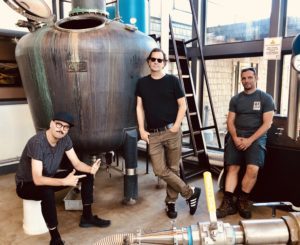 (l-r) Grisa Soba, Flaviar; Steve Luttman, Hercules Mulligan; Mario Mazza, Five & 20 Spirits.
(l-r) Grisa Soba, Flaviar; Steve Luttman, Hercules Mulligan; Mario Mazza, Five & 20 Spirits.
Hercules Mulligan Rum + Rye
I have known Steve Luttmann, the creator of Leblon Cachaça, for some time. As a spirit industry veteran, I always felt that Steve had a wonderful capacity to think outside the box and with his most recent effort demonstrates that, and much more.
Not only is the concept and product unique, but the route to market he has developed is extraordinary and may become a benchmark for the future of new brands.
But, I’m getting ahead of myself, so let’s start with the back story.
The inspiration
Steve is a history buff who grew up in Valley Forge, went to Revolutionary War reenactments and even participated in one when he was a kid, dressed in a continental soldier uniform.
The book Alexander Hamilton, by Ron Chernow fascinated him as it did Lin-Manuel Miranda, the creator of the outstanding Broadway musical, Hamilton. He became enthralled by the story of one of Hamilton’s revolutionary war friends, Hercules Mulligan.
Mulligan emigrated from Ireland in 1746 and eventually became a well-known tailor catering to wealthy British merchants and mainly senior military officers. His craftsmanship and personality — together with a few drams of liquor — made him a trusted friend of the British officers and thereby an important spy for General Washington. Mulligan saved Washington’s life twice from plots to kill or capture him. He also revealed important British secrets that significantly helped the Continental Army.
Steve’s fascination with Hercules Mulligan — tailoring uniforms, serving drinks and getting secrets — led him to develop a spirit based on this tailor-spy-hero and with a product reminiscent of the time.
Steve sums it up nicely:
“Operating in the shadows, (Mulligan) was a hero of the American Revolution, brave enough to take a stand against the injustices he saw in the world and risk his life more than once to save our founding fathers. Deploying all the tools at his disposal, including his Irish wit, off-the-cuff style, and secret stash of liquor, Mulligan seamlessly elicited secrets from the British military. He is the unsung hero of the time and this liquid pays homage to his independent spirit…”
The product
Hercules Mulligan Rum + Rye is based on a recipe from the revolutionary war period and is a 50/50 blend of Caribbean aged rum and home-grown American rye whiskey.
If you recall your American history, then you know that the popular libation of the time was Rum from the Caribbean. But the colonists were miffed when the British taxed the ingredients for their booze under the Sugar Act of 1764. Consequently, they began making liquor using the plentiful rye in the colonies and even mixed the rye with the rum. In fact, mixing different types of spirits was very common during that period.
In addition, the product uses fresh, organic, ginger root that is macerated in the rum and rye blend, and a splash of bitters is added. On the one hand, the product tastes like a ready-made Old Fashioned. But, before you think of it as a prepared cocktail, recognize that it is way more than that. It’s best enjoyed just over ice, but also great with a range of mixers and excellent as a shot.
The product currently is available on Flaviar.com (more about this in a moment). It is 86 proof (43% AbV) and sells for $38.00 for a 750ml. And get this — there were only 2,000 bottles available at time of launch.
The obstacles
Back in the late summer of 2017, Steve introduced me to the concept and the brand and I fell in love with it. We talked about which companies to approach to make this happen — from production to sales. After all, it was beyond just an idea, with a formula/recipe, a full-fledged concept and positioning, and even a package.
To maximize the full potential obviously required a company to manufacture and sell the brand.
Ah, but times have changed for new products and especially innovative brands. Companies would rather buy than build, assuming what they buy already has traction. So much for risk taking in the liquor business. That’s why many of the winning new brands come from entrepreneurs not corporate types.
Oh, and let’s not forget the brave middle managers who combine the avoidance of risk with a large dose of not-invented-here fears.
So, the response from the “big boys” was summed up with comments exemplified by this: “I love the idea, come see me when you have some proof of performance.”
And Steve set off to do just that.
The route to market
To produce the liquid, Luttmann turned to Mario Mazza, whose family has been making craft beverages on the shores of Lake Erie for more than 45 years. They produce an array of terrific craft beer, wine and spirits. I know and have visited the Mazza facilities on a number of occasions and they are a highly innovative company with many outstanding people.
Together with Grisa Soba from Flaviar, Steve and Mario spent a great deal of time blending three different rums, with three different ryes (including from NY State) and even produced a proprietary bitter to be used in the product. (You’ll read more about Mazza in a future article.)
The ginger, however, was another matter. Conventional flavor houses could not produce a ginger that met Steve’s expectations. Most were flat and very artificial tasting. Besides, with ginger from a flavor house, the TTB would require the words “natural ginger flavor”, rather than simply “ginger.” In order to have the words, “Rum, Rye, Ginger & Bitters” on the label, he had to use fresh ginger. So, he tried dried ginger but Grisa Soba, Founder of Flaviar, convinced him that the aroma was missing and needed fresh ginger. But, fresh ginger is difficult to work with and needs expertise to overcome the complexity. (By the way, Grisa is an accomplished whiskey and other spirits expert.)
To deal with the problem, he approached his friend Josh Morton, CEO of Barrow’s Intense Ginger Liqueur for help. Josh confirmed the difficulty and offered macerated fresh, organic ginger root in the rum and rye.
With product formulation and production under control, Steve now faced the daunting task of sales and marketing.
Enter Flaviar
Here is how this Direct-to-Consumer DtC membership club describes itself:
“Flaviar is a band of spirits enthusiasts, inspired by culture, rich history and the art of distillation. We forage the World of Spirits for the finest, rarest and most unique expressions out there and pack it all into a 21st century Members Club.”
Flaviar, is arguably among the most important DtC provider of spirits and the leading members club for enthusiasts. Steve teamed up with them and they are the exclusive online seller and will basically serve as an incubator for the brand. In fact, Flaviar has quite a number of owned brands sold on its platform —cognac, rum, scotch, brandy, among others.
And in case you’re wondering, like most DtC companies, Flaviar is in full compliance with the 3-tier system.
The role Flaviar played as a partner in this venture turned out to be more than just distribution. In addition to advice on the need for aroma from the ginger, Grisa Soba (the founder) had other ideas about the product, including its proof level. Further, Flaviar has a team of designers and social media experts who played an important role.
Flaviar has a very large and growing membership base and the audience for Hercules Mulligan Rum + Rye is far reaching and includes enthusiasts and influencers.
I plan to write more about Flaviar and its role in the DtC market, but for now, here are some of the key benefits of working with them. They provide a fun and entertaining description of all the products they sell; shipping is free; their tasting notes are in depth and use fun graphics; and they go so far as to produce a trademarked “Flavor Spiral.”
“The Flavor Spiral shows the most common flavors that you’ll taste in Hercules Mulligan Rum & Rye and gives you a chance to have a taste of it before actually tasting it.”
shows the most common flavors that you’ll taste in Hercules Mulligan Rum & Rye and gives you a chance to have a taste of it before actually tasting it.”
Here is what they say about the brand.
Above all, Flaviar’s main benefits are, in my opinion, a fast and effective way to gain awareness, build a following, gain invaluable data insights about buyers, and provide the important (and elusive) proof of performance.
Did I say incubator? A better description is ‘incubator on steroids.’
Proof of performance? The brand was launched on Evacuation Day 2019 (November 25 commemorating the departure of the British after the war). By January they had sold out.
What’s next?
All signs so far are that the strategy of an alliance among an innovator, producer, and online sales are working well. And, if I know Steve Luttmann, the Hercules Mulligan brand will become a franchise with endless extension opportunities — perhaps an Irish and Rye whiskies combination, double ryes, and others.
What makes it particularly interesting to me is the role of online sales as a brand launch pad. All new brands start in stores and bars. Remember the expression, “brands are built bar by bar?” Well, Hercules Mulligan is among the first to turn things around with bars and stores the second stop on the brand building trail.
I think it’s the future for new brands and products, particularly those that are highly innovative.
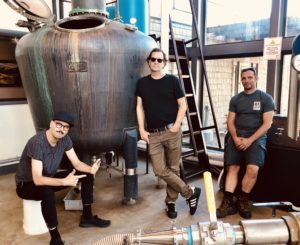 (l-r) Grisa Soba, Flaviar; Steve Luttman, Hercules Mulligan; Mario Mazza, Five & 20 Spirits.
(l-r) Grisa Soba, Flaviar; Steve Luttman, Hercules Mulligan; Mario Mazza, Five & 20 Spirits.The post Hercules Mulligan Rum + Rye first appeared on Booze Business: A Blog Dedicated to the Business of Spirits and Wine.
September 27, 2019
The Vale Fox Distillery Story
On August 26, 2019, the “birth” announcement press release appeared describing the much-awaited launch of The Vale Fox Distillery:
INTRODUCING TOD & VIXEN’S DRY GIN 1651 BY THE VALE FOX DISTILLERY
Debut Release Made in New York by British Master Distiller and Trio of World’s Top Bartenders
It went on to say:
… With three of the world’s top bartenders, gaz regan, Leo Robitschek, and Jeffrey Morgenthaler, involved from day one, Tod & Vixen’s Dry Gin 1651 is specifically designed to enhance flavors in cocktails. Add the expertise of our British Master Distiller and you have one lively mix of British sophistication and American mischief. Tod & Vixen’s Dry Gin 1651 is made from the cocktail backwards…all the way back to the year 1651, in fact.
And therein lies my tale…
The back story
The email was similar to the many I receive about starting a distillery and looking for advice and assistance. Most are from well-intentioned dreamers who think the path to success and fortune can come out of a bottle. Like this one, “my grandmother passed away and left me $100,000… I’ve always wanted go into the liquor business… can you help me launch the business.” My advice: “Perhaps you should invest the money.”
But, this particular email caught my eye and felt like it might be worth pursuing further. It was from a gentleman named, Eral Gogol-Kline.
“I have been reading booze business for a few months now and have really enjoyed your insights into the spirits and wine industry. After spending the last 13 years in investing and finance, I switched gears and am currently starting a whisky distillery in the Hudson Valley. I would love to talk to you about the services you offer.” (That was in July, 2015.)
So, we arranged a call and I had two questions, the answers to which would determine if I could really be of help. “Do you plan to make vodka while your whisky matures.” The answer was no, he wanted to make a world class gin. Okay, that was intriguing and welcome news. The next was “Do you have an exit strategy?” His reply surprised me: “No, I don’t; I suppose down the road that could conceivably happen but my plan is to build a business for myself, my family, and the future.” I couldn’t wait to get started.
My journey with Eral Gokgol-Kline began later that year.
 Eral Gokgol-Kline
Eral Gokgol-KlineAbout Eral
What impressed me most about Eral were a number of things. Here is a person who is willing to give up a successful global investment practice to pursue his dream of starting a distillery. Born abroad to parents involved in international non-profit organizations, he spent his childhood in Turkey, traveled the world, and ultimately moved to the US, where he went to school. Then spent eight years living in London working in investment funds.
Above all, it was (and still is) clear to me that distillation is a central part of his nature. His love of craftmanship and quality together with studying about and loving single malt scotch (which he learned to appreciate from his mother), is palpable and very impressive. I’ve met many distillers (talented newbies and seasoned pros) and Eral can hold his own with the best of them.
I later found out that distilling is a part of his DNA. He did some genealogy research and learned that his great, great, great, etc., Dutch grandfather founded a New York distillery in 1651, about an hour away from The Vale Fox Distillery. (By the way, vale is an old English term for valley.)
The Team
A significant flaw of many startup distillers is their belief that their efforts are bound for success, no matter what. “Build it and they will come,” works only in the movies. A distributor friend puts it this way: “I have a warehouse full of other people’s dreams.”
Not Eral. His passion was not equipped with blinders. As he set out on this journey, he did two things — studied and learned about all aspects of the business and surrounded himself with some extraordinary advisors. So, by the time I got involved he was well on his way with the overall plan for the Vale Fox Distillery. Ultimately, his goal was to produce world class American Single Malt Whisky. The ability to replicate, and arguably surpass the malts from Scotland, was demonstrated by such award-winning malts as Kavalan from Taiwan, and a host of Japanese products. Eral reasoned that American ingenuity, history and whiskey making skills would be a perfect match with the traditional approaches used in Scotland.
His advisors included, the late Dr. Jim Swan, a chemist formerly affiliated with the Scotch Whisky Research Institute and inventor of the unique aging casks now used by The Vale Fox Distillery. And, Harry Cockburn, with over 45 years of distillation experience and former affiliations including the Bowmore Distillery. Douglas Cruickshank, former Production Director at Chivas Brothers, joined later.
With his advisors’ guidance, he designed the distillery and purchased the equipment —pot stills made from the highest purity copper by Forsyths, a Scottish coppersmith with over 200 years of experience.
Most importantly, he purchased a small batch estate located on a 120-acre plot in the Hudson Valley region of NY state. But, to produce a world class single malt takes time and Eral planned to exceed the minimum aging requirement. In the interim, he decided to produce an exceptional world class gin. Again, by the time I had come along he had created the brand — Tod & Vixen Dry Gin 1651 — including concept, branding, and packaging. (More about the gin in a moment.)
To produce the gin, and ultimately the single malt whisky, Eral hired Roselyn Thomson as the master distiller. Her career in the whisky industry began in 2002 and worked in the UK for such notable companies and brands as Macallan (the first female distillery operator), Aultmore, Dewar’s, and others. In short, the perfect candidate to blend the two whisky cultures.
The most recent addition to the team is Cliff Oldfield, who worked with me during my Mongolian Vodka journey and more recently with Dad’s Hat Rye. Cliff manages sales. Two other important players have rounded out the team — Kate Laufer Gorenstein PR, and Mindflint, a digital and social media agency.
And so, the group in place, the distillery up and running, the launch of the gin took place at the end of August this year. But not without birth pains.
 Cliff Oldfield, Eral, Roz Thomson
Cliff Oldfield, Eral, Roz ThomsonTod & Vixen Dry Gin 1651
Let’s start with the name. Tod is the name for a male fox and Vixen the name for a female fox. When I first saw the branding and packaging, I fell in love with it. It is playful and the two characters reflect the positioning of the brand. But more than that, they represent an interesting point of departure for a gin brand that set the stage for the overall strategy and reason for being — to succeed a brand must cut through the clutter of new gin brands by being unique and relevant.
From 2015 to 2018, nearly 600 non-whiskey brands were introduced in the US and over 20% of those products were gin. That said to Eral and me, that the single most important question we would be asked by both the trade and consumers would be — why this gin? What makes it different and something I should buy?
In short, we needed to cut through the clutter and distinguish the brand in the market. A number of ideas emerged mainly centered on the product itself. Here’s how Eral and his team describe it on their website:
“How our products are consumed is as important to us as how they are made. So, we recruited a team of revered cocktail professionals led by Gary (gaz) Regan, including Leo Robitschek and Jeffery Morganthaler, early on and paired them with our British Master Distiller to help us develop our gin. The result is one lively mix of British Sensibility and American Mischief©.”
Part of the answer was to develop a product with the guidance of a team of cocktail experts and “make it from the cocktail backwards.” After all, gin is almost always consumed in a mixed drink, most notably the Negroni.
A series of back and forth blind tastings among these three gentlemen ultimately produced a product that gaz regan (Mr. Negroni) described as “this gin rocks.” More specifically:
“… designed to enhance the flavors of gin cocktails, our inaugural Tod & Vixen’s Dry Gin 1651 is made by macerating botanicals — including juniper, angelica root and rooibos tea — to extract their flavors, then non-chill filtering to retain the unearthed profile. The resulting sip is bold on the entry, giving way to a well-balanced, vibrant gin with a weighty mouthfeel.”
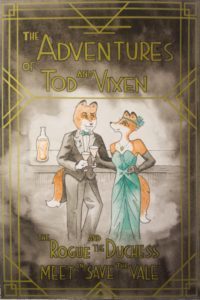 Tod & Vixen Graphic Novel
Tod & Vixen Graphic NovelTo enhance the playful aspects of the gin, I was charged with the fun mission of writing and producing The Vale Fox Distillery’s one-of-a-kind graphic novel for Tod & Vixen’s Dry Gin 1651. It tells the tongue-in-cheek tale of two eponymous grey foxes with a penchant for imbibing who embark on a quest to save their homeland from imminent environmental destruction. (If you would like a copy, you can get it on the website here.)
Along the way…
As a craft distiller in New York State, The Vale Fox Distillery is entitled to a number of benefits. So long as 75% of ingredients are sourced from the state, a distiller can self-distribute, conduct tastings, sell product at their location, and a number of other important benefits.
But producing a world class gin is far from a “slam dunk” undertaking. “Daunting” is a better description. Despite the planning, the ideas, and the team, a parade of issues and delaying factors entered the picture, in addition to the usual back and forth with the TTB (Tax and trade Bureau) and NYSLA (NY State Liquor Authority) approval process.
The township of La Grange, NY, where the distillery is located, needed to grant approvals and assure compliance with zoning issues. Meetings with township officials, individually and at town meetings, were met with minor concerns but took some time and resulted in delays.
The biggest problem was getting Roz Thompson a visa to work as distillery manager. This occurred at the height of the current Washington administration’s concern about immigration and entry into the US. Never mind that she is a top-notch distiller with incredible and arguably unique skills — it took a battery of lawyers, a ton of paperwork, and many months.
Most ironic of all was the fact that Eral is a committed environmentalist who went out of his way to steward the protection of the land and its inhabitants. The property is home to a herd of deer, turkeys, a bobcat, tons of birds of prey and even a “shy little fox that runs around in the mornings.” The operation runs on geothermal energy, and he’s gone out of his way to protect two endangered species, the Indiana bat and the Blanding’s turtle. The irony was the nonsensical demands (in my view) of the state authorities with peculiar guidelines for protecting the turtles. More delays.
Oh, and let’s not forget the interruption in shipping the labels from Europe because of the summer.
At the end of the day
The standard definition of an entrepreneur is someone who organizes, manages, and assumes the risks of a business or enterprise. To me there’s more, including tenacity and constant risk taking.
Sure, all startup entrepreneurs have these traits to a more of lesser degree. But I have never encountered one who said this in a Daily Beast interview:
“You know, we did a lot of stuff—we failed a lot,” he says. “We learned from our failures. And to me, failing is very important because if we’re not failing, we’re really not trying.”
Despite the challenges and hurdles, Eral has begun to see his dream come to fruition. And, I must tell you that Tod & Vixen’s Dry Gin 1651 is an outstanding product, not only in a Negroni but in any gin cocktail. In addition, Eral is working on a number of gin variations, each more exciting than the other.
But, I can’t wait to try the (American) Single Malt Whisky.
The Vale Fox Distillery Story
On August 26, 2019, the “birth” announcement press release appeared describing the much-awaited launch of The Vale Fox Distillery:
INTRODUCING TOD & VIXEN’S DRY GIN 1651 BY THE VALE FOX DISTILLERY
Debut Release Made in New York by British Master Distiller and Trio of World’s Top Bartenders
It went on to say:
… With three of the world’s top bartenders, gaz regan, Leo Robitschek, and Jeffrey Morgenthaler, involved from day one, Tod & Vixen’s Dry Gin 1651 is specifically designed to enhance flavors in cocktails. Add the expertise of our British Master Distiller and you have one lively mix of British sophistication and American mischief. Tod & Vixen’s Dry Gin 1651 is made from the cocktail backwards…all the way back to the year 1651, in fact.
And therein lies my tale…
The back story
The email was similar to the many I receive about starting a distillery and looking for advice and assistance. Most are from well-intentioned dreamers who think the path to success and fortune can come out of a bottle. Like this one, “my grandmother passed away and left me $100,000… I’ve always wanted go into the liquor business… can you help me launch the business.” My advice: “Perhaps you should invest the money.”
But, this particular email caught my eye and felt like it might be worth pursuing further. It was from a gentleman named, Eral Gogol-Kline.
“I have been reading booze business for a few months now and have really enjoyed your insights into the spirits and wine industry. After spending the last 13 years in investing and finance, I switched gears and am currently starting a whisky distillery in the Hudson Valley. I would love to talk to you about the services you offer.” (That was in July, 2015.)
So, we arranged a call and I had two questions, the answers to which would determine if I could really be of help. “Do you plan to make vodka while your whisky matures.” The answer was no, he wanted to make a world class gin. Okay, that was intriguing and welcome news. The next was “Do you have an exit strategy?” His reply surprised me: “No, I don’t; I suppose down the road that could conceivably happen but my plan is to build a business for myself, my family, and the future.” I couldn’t wait to get started.
My journey with Eral Gokgol-Kline began later that year.
 Eral Gokgol-Kline
Eral Gokgol-KlineAbout Eral
What impressed me most about Eral were a number of things. Here is a person who is willing to give up a successful global investment practice to pursue his dream of starting a distillery. Born abroad to parents involved in international non-profit organizations, he spent his childhood in Turkey, traveled the world, and ultimately moved to the US, where he went to school. Then spent eight years living in London working in investment funds.
Above all, it was (and still is) clear to me that distillation is a central part of his nature. His love of craftmanship and quality together with studying about and loving single malt scotch (which he learned to appreciate from his mother), is palpable and very impressive. I’ve met many distillers (talented newbies and seasoned pros) and Eral can hold his own with the best of them.
I later found out that distilling is a part of his DNA. He did some genealogy research and learned that his great, great, great, etc., Dutch grandfather founded a New York distillery in 1651, about an hour away from The Vale Fox Distillery. (By the way, vale is an old English term for valley.)
The Team
A significant flaw of many startup distillers is their belief that their efforts are bound for success, no matter what. “Build it and they will come,” works only in the movies. A distributor friend puts it this way: “I have a warehouse full of other people’s dreams.”
Not Eral. His passion was not equipped with blinders. As he set out on this journey, he did two things — studied and learned about all aspects of the business and surrounded himself with some extraordinary advisors. So, by the time I got involved he was well on his way with the overall plan for the Vale Fox Distillery. Ultimately, his goal was to produce world class American Single Malt Whisky. The ability to replicate, and arguably surpass the malts from Scotland, was demonstrated by such award-winning malts as Kavalan from Taiwan, and a host of Japanese products. Eral reasoned that American ingenuity, history and whiskey making skills would be a perfect match with the traditional approaches used in Scotland.
His advisors included, the late Dr. Jim Swan, a chemist formerly affiliated with the Scotch Whisky Research Institute and inventor of the unique aging casks now used by The Vale Fox Distillery. And, Harry Cockburn, with over 45 years of distillation experience and former affiliations including the Bowmore Distillery. Douglas Cruickshank, former Production Director at Chivas Brothers, joined later.
With his advisors’ guidance, he designed the distillery and purchased the equipment —pot stills made from the highest purity copper by Forsyths, a Scottish coppersmith with over 200 years of experience.
Most importantly, he purchased a small batch estate located on a 120-acre plot in the Hudson Valley region of NY state. But, to produce a world class single malt takes time and Eral planned to exceed the minimum aging requirement. In the interim, he decided to produce an exceptional world class gin. Again, by the time I had come along he had created the brand — Tod & Vixen Dry Gin 1651 — including concept, branding, and packaging. (More about the gin in a moment.)
To produce the gin, and ultimately the single malt whisky, Eral hired Roselyn Thomson as the master distiller. Her career in the whisky industry began in 2002 and worked in the UK for such notable companies and brands as Macallan (the first female distillery operator), Aultmore, Dewar’s, and others. In short, the perfect candidate to blend the two whisky cultures.
The most recent addition to the team is Cliff Oldfield, who worked with me during my Mongolian Vodka journey and more recently with Dad’s Hat Rye. Cliff manages sales. Two other important players have rounded out the team — Kate Laufer Gorenstein PR, and Mindflint, a digital and social media agency.
And so, the group in place, the distillery up and running, the launch of the gin took place at the end of August this year. But not without birth pains.
 Cliff Oldfield, Eral, Roz Thomson
Cliff Oldfield, Eral, Roz ThomsonTod & Vixen Dry Gin 1651
Let’s start with the name. Tod is the name for a male fox and Vixen the name for a female fox. When I first saw the branding and packaging, I fell in love with it. It is playful and the two characters reflect the positioning of the brand. But more than that, they represent an interesting point of departure for a gin brand that set the stage for the overall strategy and reason for being — to succeed a brand must cut through the clutter of new gin brands by being unique and relevant.
From 2015 to 2018, nearly 600 non-whiskey brands were introduced in the US and over 20% of those products were gin. That said to Eral and me, that the single most important question we would be asked by both the trade and consumers would be — why this gin? What makes it different and something I should buy?
In short, we needed to cut through the clutter and distinguish the brand in the market. A number of ideas emerged mainly centered on the product itself. Here’s how Eral and his team describe it on their website:
“How our products are consumed is as important to us as how they are made. So, we recruited a team of revered cocktail professionals led by Gary (gaz) Regan, including Leo Robitschek and Jeffery Morganthaler, early on and paired them with our British Master Distiller to help us develop our gin. The result is one lively mix of British Sensibility and American Mischief©.”
Part of the answer was to develop a product with the guidance of a team of cocktail experts and “make it from the cocktail backwards.” After all, gin is almost always consumed in a mixed drink, most notably the Negroni.
A series of back and forth blind tastings among these three gentlemen ultimately produced a product that gaz regan (Mr. Negroni) described as “this gin rocks.” More specifically:
“… designed to enhance the flavors of gin cocktails, our inaugural Tod & Vixen’s Dry Gin 1651 is made by macerating botanicals — including juniper, angelica root and rooibos tea — to extract their flavors, then non-chill filtering to retain the unearthed profile. The resulting sip is bold on the entry, giving way to a well-balanced, vibrant gin with a weighty mouthfeel.”
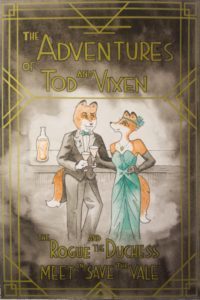 Tod & Vixen Graphic Novel
Tod & Vixen Graphic NovelTo enhance the playful aspects of the gin, I was charged with the fun mission of writing and producing The Vale Fox Distillery’s one-of-a-kind graphic novel for Tod & Vixen’s Dry Gin 1651. It tells the tongue-in-cheek tale of two eponymous grey foxes with a penchant for imbibing who embark on a quest to save their homeland from imminent environmental destruction. (If you would like a copy, you can get it on the website here.)
Along the way…
As a craft distiller in New York State, The Vale Fox Distillery is entitled to a number of benefits. So long as 75% of ingredients are sourced from the state, a distiller can self-distribute, conduct tastings, sell product at their location, and a number of other important benefits.
But producing a world class gin is far from a “slam dunk” undertaking. “Daunting” is a better description. Despite the planning, the ideas, and the team, a parade of issues and delaying factors entered the picture, in addition to the usual back and forth with the TTB (Tax and trade Bureau) and NYSLA (NY State Liquor Authority) approval process.
The township of La Grange, NY, where the distillery is located, needed to grant approvals and assure compliance with zoning issues. Meetings with township officials, individually and at town meetings, were met with minor concerns but took some time and resulted in delays.
The biggest problem was getting Roz Thompson a visa to work as distillery manager. This occurred at the height of the current Washington administration’s concern about immigration and entry into the US. Never mind that she is a top-notch distiller with incredible and arguably unique skills — it took a battery of lawyers, a ton of paperwork, and many months.
Most ironic of all was the fact that Eral is a committed environmentalist who went out of his way to steward the protection of the land and its inhabitants. The property is home to a herd of deer, turkeys, a bobcat, tons of birds of prey and even a “shy little fox that runs around in the mornings.” The operation runs on geothermal energy, and he’s gone out of his way to protect two endangered species, the Indiana bat and the Blanding’s turtle. The irony was the nonsensical demands (in my view) of the state authorities with peculiar guidelines for protecting the turtles. More delays.
Oh, and let’s not forget the interruption in shipping the labels from Europe because of the summer.
At the end of the day
The standard definition of an entrepreneur is someone who organizes, manages, and assumes the risks of a business or enterprise. To me there’s more, including tenacity and constant risk taking.
Sure, all startup entrepreneurs have these traits to a more of lesser degree. But I have never encountered one who said this in a Daily Beast interview:
“You know, we did a lot of stuff—we failed a lot,” he says. “We learned from our failures. And to me, failing is very important because if we’re not failing, we’re really not trying.”
Despite the challenges and hurdles, Eral has begun to see his dream come to fruition. And, I must tell you that Tod & Vixen’s Dry Gin 1651 is an outstanding product, not only in a Negroni but in any gin cocktail. In addition, Eral is working on a number of gin variations, each more exciting than the other.
But, I can’t wait to try the (American) Single Malt Whisky.
The post The Vale Fox Distillery Story first appeared on Booze Business: A Blog Dedicated to the Business of Spirits and Wine.
August 23, 2019
Tony Sachs: Outstanding Spirits Writer and All-Around Mensch
I have become totally fascinated by, and admire, the spirits writers who have come to play an important role in the booze business. When I started in the industry, and for much of the 1990s, there were not as many as there are today and I believe the spirits industry is better for their presence.
I enjoy reading and aspiring to write as well as people like Noah Rothbaum, Fred Minnick, Lew Bryson, Rosie Schaap, Dave Wondrich, Amanda Schuster, and others. With their willingness, I hope to write about them as I have in the past with Paul Pacult and Gaz Regan. So, consider this the first in a series about people who influence the business from behind their computer.
 Photo by Gabi Porter
Photo by Gabi PorterTony’s Story
Simply put, I love reading what he writes and, for me, he was a top choice to focus on. I can tell you why in a long-winded manner, but I thought why not ask a mutual friend in the industry about Tony, someone who knows him personally and professionally. I turned to Joe Magliocco, President Chatham Imports, Inc. who said this:
“Tony Sachs is a terrific spirits writer. He asks thoughtful and insightful questions, and writes with a very engaging style. His articles are always interesting. He has an encyclopedic knowledge of spirits, especially whiskeys, and an extremely sophisticated palate.”
Beyond his writing, Tony is very down to earth, an affable and fun guy to hang out with and have a few. I follow him on Facebook and love his posts about him and his family and especially the exotic trips and dinners with spirits suppliers. (Often as I read about these journeys, I’m reminded of the adage from back in the day — “You won’t become a millionaire working at Seagram but you’ll sure live like one.”)
Tony is a lifelong New Yorker with the gift of writing in his DNA. Both his parents were, as he puts it, Mad Men era type copywriters and he has a BA in journalism from NYU. Despite this, Tony had always been obsessed with music and, foregoing law school, opened a record shop in the Upper Westside of NYC. The store had a pretty good run of 12 years from 1993 to 2005. A business can flourish but if the environment for that business changes, it faces an uphill battle.
As the music business was traveling south around 2005, Tony set his sights on another passion he had, one which was growing at the time — the return of the cocktail culture.
He first became interested in the history of cocktails while running his store and read William Grimes‘ “Straight Up Or On The Rocks: The Story Of The American Cocktail.”
As he explained it to me:
“A customer of mine dealt in rare books, and I built up a nice collection of vintage bar/cocktail books from him, long before most folks knew or cared about them. I also got to know about whiskey because one of the friends of the store worked at Union Square Wine and Spirits. He’d bring my partner terrific bottles, like Sazerac 18 YO or Rittenhouse 21, and my partner actually didn’t like them! So, he’d either give them to me or I’d trade him other stuff from my collection. It was a great education! Anyway, by 2005 I knew more about booze than your average consumer, even if I was still at beginner-level standards compared to titans like Gaz Regan or David Wondrich.”
Writing About Spirits
So, Tony knew about writing, knew about booze, but didn’t know about booze writing. The seminal moment came when he took a wine and spirits course from the legendary Harriet Lembeck. As he put it, “I found the wine part pretty uninteresting, but the spirits part really grabbed me.”
What followed was an immersion in the NYC burgeoning cocktail scene, getting to meet people like Gaz Regan, Jill and Dale DeGroff, and others, and some “toe in the water” articles for Huffington Post. An article on vermouth. Then an article on bourbon. Next thing he knew, PR folks were inviting him to tastings and he got a writing gig for The Liquid Muse. The rest is history.
 His wall of booze
His wall of boozeHis articles
Tony’s articles have appeared in the Robb Report, Esquire, Serious Eats, Liquor.com, Whiskey Advocate, Whiskey Wash, among others. Here are some that you might enjoy reading.
“Do the TTB’s Proposed New Regulations Leave Craft Distillers Over a Barrel?” This is a very recent article in Whiskey Advocate on an important subject for craft producers.
“New York In The ‘90s, Drunkenly.” A fun and interesting nostalgic read about the concoctions that passed for cocktails. Written for medium.com.
And, of course, a fun article that you would expect from a spirit’s writer who loves music — “Ten Classic Drinking Songs Recorded by Women,” which appeared in Thirsty.
Putting him to the test
In addition to the fun topics above, Tony is widely known for his spot-on product reviews. So, while we were talking about his career, I invited him over to taste the Mister Sam Whiskey I recently received. I had saved opening it for just this occasion. (See my reference to the brand earlier this summer.)
It was fun watching him work and he saw something I had missed — the AbV is 66.9%. His review is in Whisk(e)y of the Week, which appeared recently in Liquor.com. Here is an excerpt:
Sazerac’s master blender, Drew Mayville, has his artistry on full display here. Dark fruit, most noticeably plums and cherries, mingle with brown sugar, gingerbread and baking spices, along with a fair amount of oak and rye spice. The finish is long and a little hot without water, but much more palatable than the high ABV would lead you to believe. A few drops of water turn down the heat and turns up the fruity and oaky notes without diluting the flavor in the least.
Actually, truth be told, his review depressed me a bit … There is no way I could write a review like that. All I tasted and smelled was whiskey. I guess I’ll just stick to stories.
Oh, and by the way, here’s part of the blurb about Tony that accompanied the story in Liquor.com:
Stay-at-home dad, 20th century music enthusiast, eater of dumplings. Opinionated but generally pleasant about it.
I told you he was a mensch.

